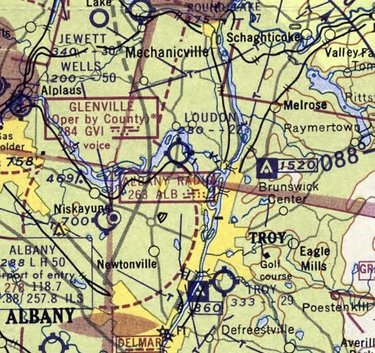We call it home
To the Editor:
At the end of a dusty dead-end road stands a Quonset-hut type structure that is typical of the hangars of the 1940s and 1950s. The block building attached to the south side of the structure, facing the parking lot, is the office. The time, late 1950s, early 1960s.
Inside the office, behind the linoleum-covered counter, are two desks — one with a schedule book; the other, a roll-top, is host to several logbooks. The top drawer of the adjacent filing cabinet serves as a cash box and also supports the Unicom radio used for aircraft advisories.
There’s a phone booth for outgoing and incoming calls. A soda machine selling soda for 10 cents a bottle. An overstuffed couch, perfect for napping or sitting on while engaging in frequent hangar flying.
The two other doors in the office lead to the shop, used for aircraft repair, and of course the hangar itself.
Inside the hangar, large wooden laminated beams form the sides and roof of the structure. They are supported by a two-foot-high concrete foundation on three sides of the hangar.
On the east side of the hangar stands the manually operated hangar doors. The tracks for each door extend beyond the sides of the building. The doors require some serious maneuvering on windy days.
The open hangar doors face the main taxiway, which leads to the 2,200-foot north-south, grass and gravel runway. To the south end of this runway is the grass cover east-west runway of 1,800 feet.
The writing on the old wing sitting on its leading edge on the access road calls it “Loudon Aircraft.” The local residents call it Loudon Airport. The pilots call it home.
The summer finds us flying just for the fun of flying. There is also cross-country flying for those visiting other airports or the like, or gaining required experience for future pilot ratings.
Heavy rain falling on the metal hangar from seasonal thunderstorms is a sound not soon forgotten.
Fall brings a kaleidoscope of colors. Colors so vivid distraction from one’s flying is quite common.
Winters are fierce: high winds, deep snow, and bone-chilling cold. Outfitting one of the Cubs with a set of skis is a unique treat, particularly when making your own runway out of our snow-covered airport.
Spring brings with it another challenge: mud! Somewhat short of half of the north-south runway is all that is usable during the mud season.
Performing a cross-wind, short/soft field take-off was standard procedure. We became quite proficient landing crosswind on the very same runway. The usable width of the runway in spots was only 30 to 40 feet. After each landing, we would shut the airplane down and push it back into position for another take-off.
Sometimes we would work for hours just to get a couple of airplanes into the air.
There is the camaraderie, friendship, and love of flying — a common bond that is hard to explain and even harder to resist.
This small airport produced many pilots, from private up to and including advanced flight instructors. Many of us pursued aviation careers as corporate and airline pilots as well as master mechanics and fixed base operators, a tribute to our heritage.
Loudon was closed in 1968. Loudon, as with many other similar airports, has made considerable contributions that help make aviation what it is today.
We owe much to these small airports and to the people who made them happen.
E.A. Chevrette Jr.
Guilderland
Editor’s note: E.A. Chevrette Jr. is the author of the book, “Wings of Fortune: Personal Tales from the ‘Golden Age of General Aviation.’”

